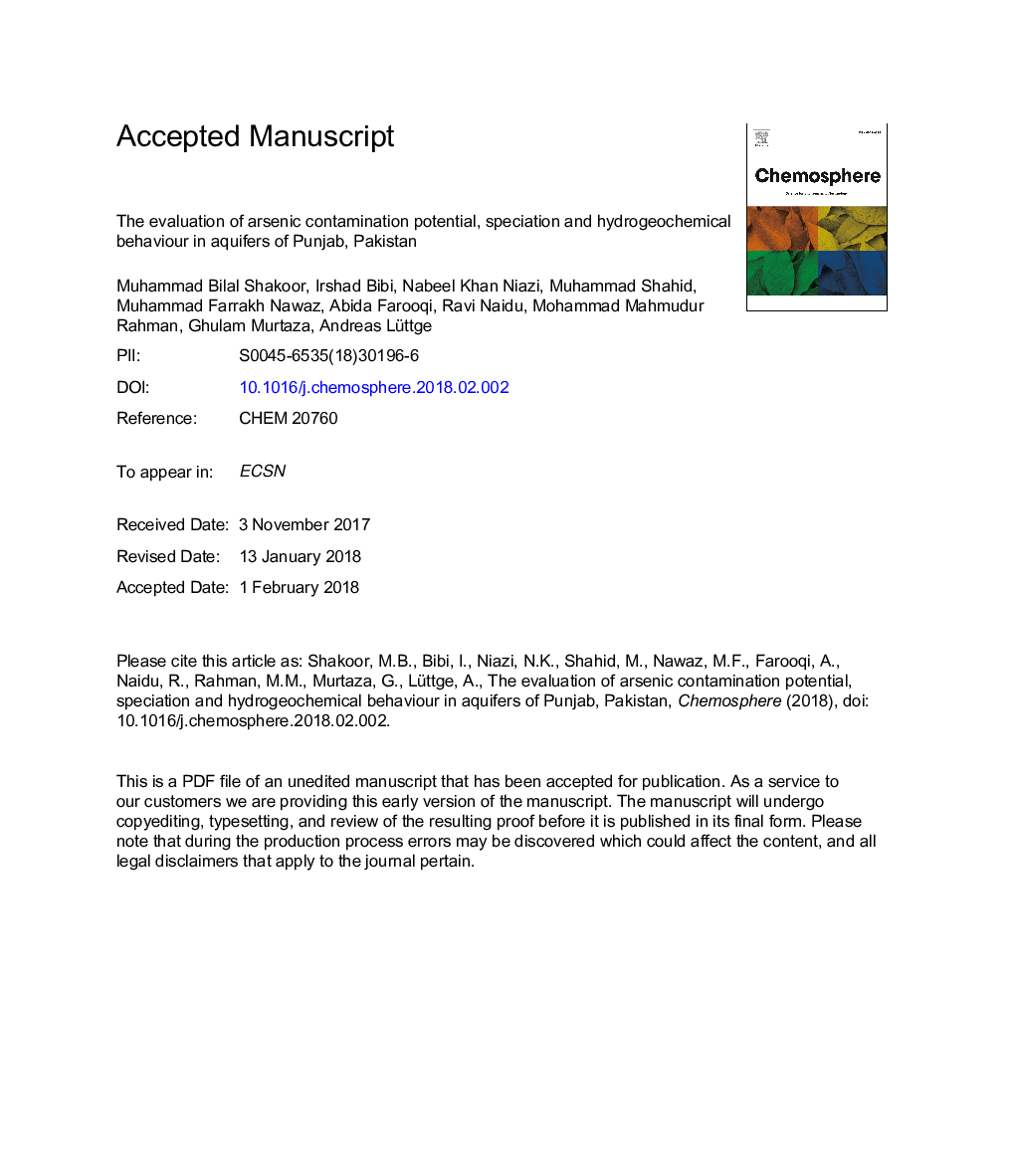| Article ID | Journal | Published Year | Pages | File Type |
|---|---|---|---|---|
| 8851884 | Chemosphere | 2018 | 43 Pages |
Abstract
In this study, we tested 123 groundwater wells from five different areas of Punjab, Pakistan for arsenic (As) contamination level and species, as well as delineated hydrogeochemical behaviour of As in aquifers. Results revealed that 75% and 41% of the groundwater wells exceeded the safe As limit of World Health Organisation (WHO, 10â¯Î¼gâ¯Lâ1) and Pakistan-EPA (50â¯Î¼gâ¯Lâ1), respectively. Arsenite (As(III)) and arsenate (As(V)) spanned 0-80% and 20-100% of total As (1.2-206â¯Î¼gâ¯Lâ1), respectively. The mean As content (5.2â¯Î¼gâ¯Lâ1) of shallow wells at 9-40â¯m depth did not exceed the WHO safe limit, representing a safe aquifer zone for pumping of groundwater compared to deeper wells at 41-90â¯m (51â¯Î¼gâ¯Lâ1) and >90â¯m (23â¯Î¼gâ¯Lâ1) depths. Piper-plot elucidated that the aqueous chemistry was dominated with Na-SO4, Na-Ca-SO4, Na-Mg-SO4 type saline water. Principal component analysis grouped As concentration with well depth, pH, salinity, Fe and CO3, exhibiting that these hydrogeochemical factors could have potential role in controlling As release/sequestration into the aquifers of study area. Geochemical modeling showed positive saturation indices only for iron (Fe) oxide-phases, indicating Fe oxides as the major carriers of As. Overall, this study provides insights to tackle emerging As threat to the communities in Punjab, Pakistan, as well as help develop suitable management/mitigation strategies - based on the baseline knowledge of As levels/species and factors governing As contamination in the study area.
Related Topics
Life Sciences
Environmental Science
Environmental Chemistry
Authors
Muhammad Bilal Shakoor, Irshad Bibi, Nabeel Khan Niazi, Muhammad Shahid, Muhammad Farrakh Nawaz, Abida Farooqi, Ravi Naidu, Mohammad Mahmudur Rahman, Ghulam Murtaza, Andreas Lüttge,
